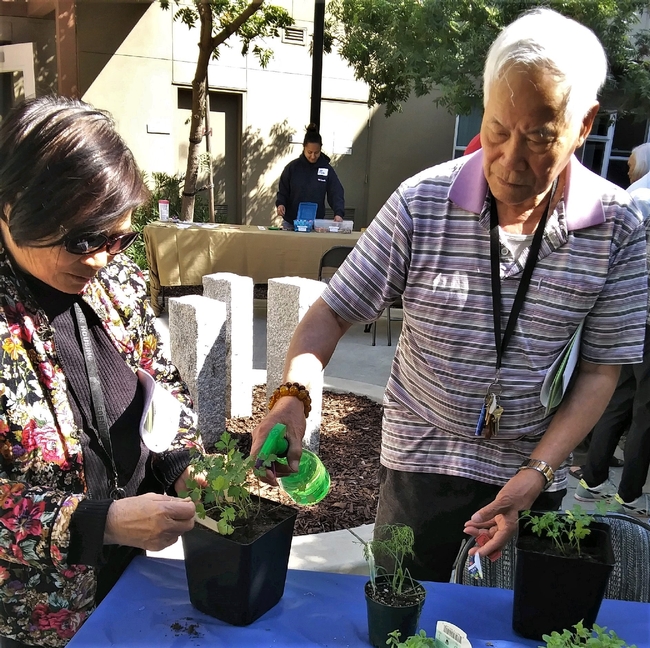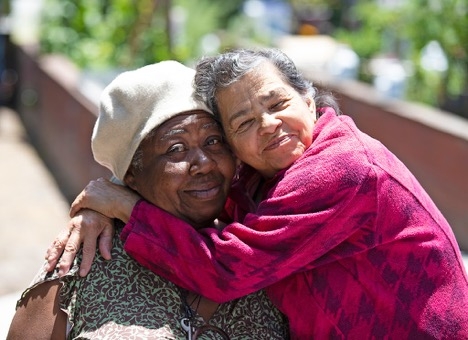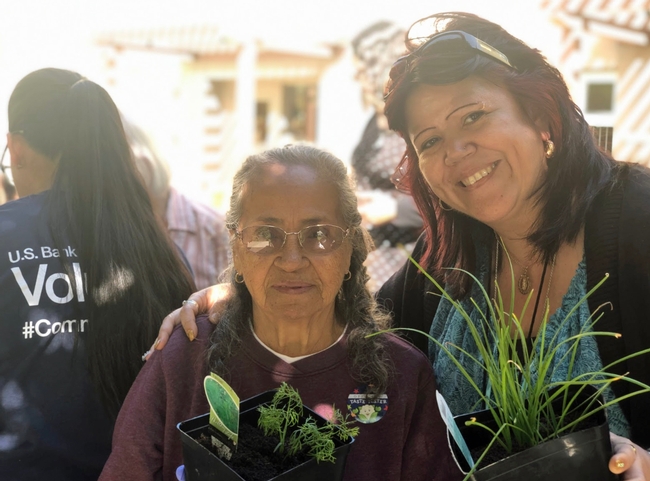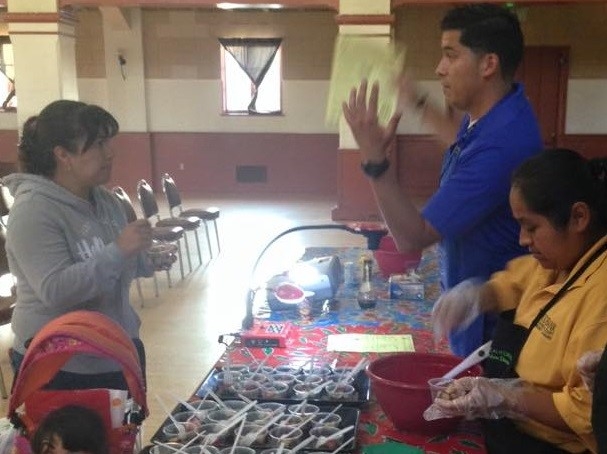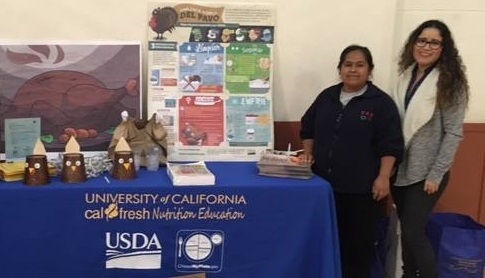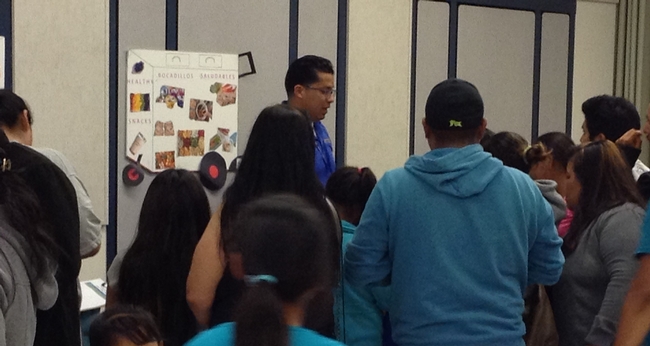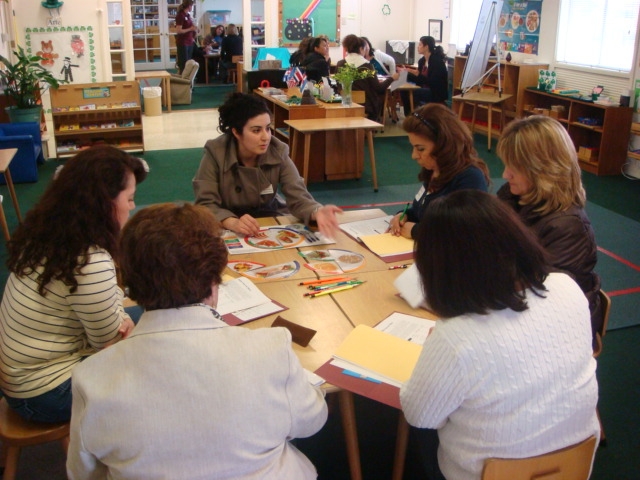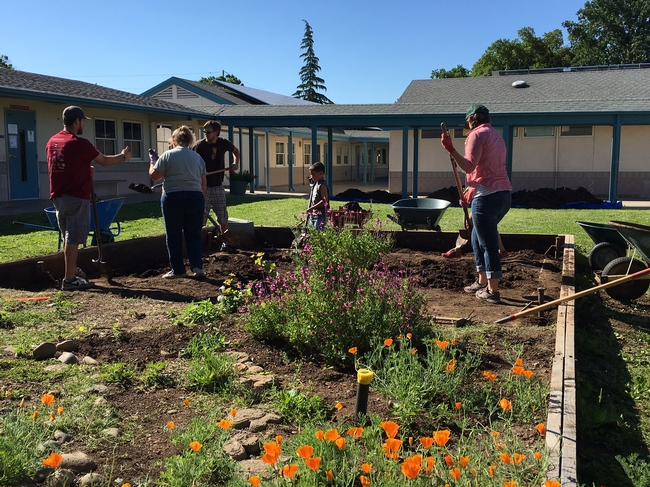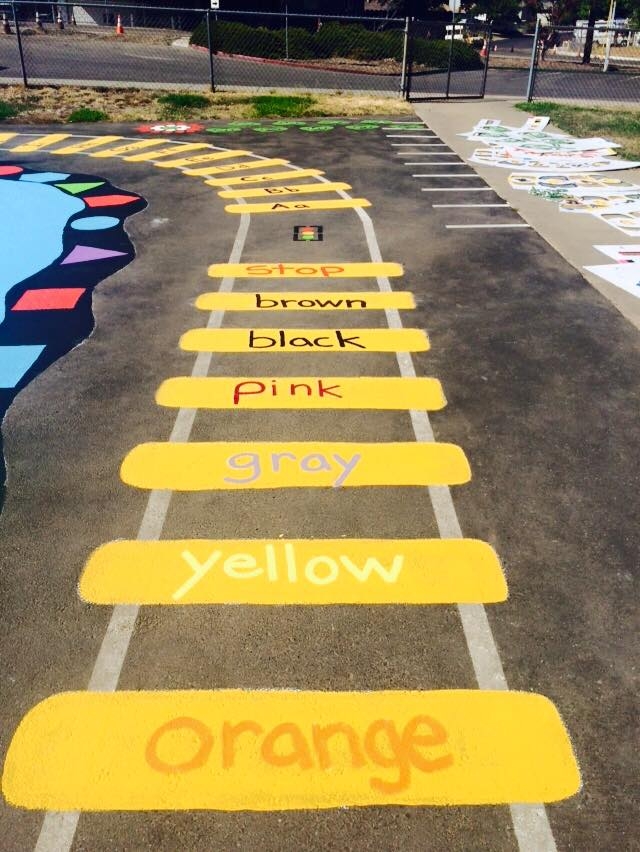
Posts Tagged: nutrition education
Seniors grow food and friendships in gardening, healthy living program
“I didn't know I would get so much soil today, now I can grow more cucumbers in my room!” said Miss Anita as she placed fresh soil into her plant pottery on Community Planting Day. The Estabrook Place resident was a first-time participant of a new gardening program for older adults hosted by the University of California Cooperative Extension in Alameda County.
The UC Cooperative Extension senior gardening program integrates healthy eating, active living and gardening education. Miss Anita was one of 200 seniors who participated in the gardening and nutrition education program led by Katherine Uhde, a CalFresh Healthy Living, UC community education specialist, in collaboration with the UC Master Gardener Program of Alameda County.
According to the National Institute of Aging, older adults experience high levels of social isolation and loneliness, which lead to an increased risk of chronic conditions such as high blood pressure, depression and obesity. Educational activities that promote a healthy lifestyle and encourage interaction with peers are recommended to prevent these conditions in aging adults.
“We need to be able to address the needs of our greying generation and focus on prevention rather than treatment,” explained Mary Blackburn, UC Cooperative Extension nutrition, family, and consumer sciences advisor, about the benefits of group-based wellness activities for seniors.
The senior gardening program was developed by Blackburn and tested at Palo Vista Gardens Community, an Oakland Housing Authority-managed senior property. It is part of a larger quality of life study on the health of aging adults being conducted at seven Eden Housing sites with CalFresh Healthy Living, UC, which serves diverse populations of people who are eligible for the Supplemental Nutrition Assistance Program, also known as CalFresh food. Through nutrition education and physical activity classes, CalFresh Healthy Living, UC empowers seniors and other underserved Californians to improve their health.
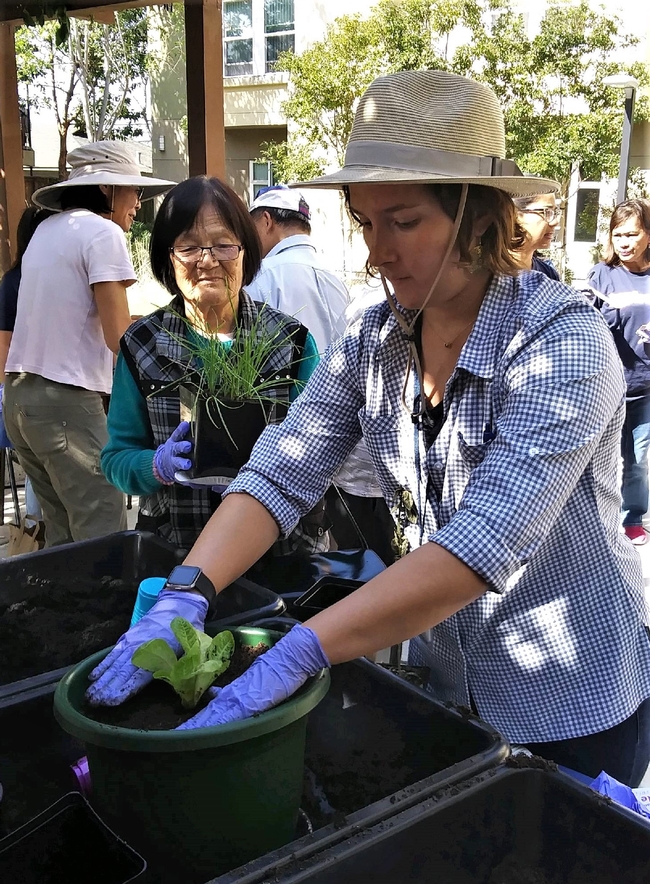
This is the first project that CalFresh Healthy Living, UC partnered on with Eden Housing, a nonprofit provider of affordable housing in Alameda County. Through the collaboration, Eden Housing residents are able learn about nutrition, food safety and gardening concurrently at their living facilities. Residents learned how to grow fresh herbs, including marjoram and basil, while learning the benefits of cooking with them.
In past research, Blackburn found unsafe food handling practices used by over half of the fixed-income seniors and food handlers and caregivers serving seniors surveyed in 10 counties. At the Alameda County location, a UC Master Food Preserver volunteer, trained in Solano County, offers safe food handling classes.
Because the residents speak various languages including Cantonese, Vietnamese, Spanish, and Korean, CalFresh Healthy Living, UC has partnered with the Volunteer Health Interpreters Organization to connect certified, student volunteer translators to assist the participants. This partnership allows UCCE educators to communicate with participants in their native language and allows residents to more easily interact with their neighbors and develop friendships.
To paraphrase the African proverb “It takes a village to raise a child,” it takes a community to meet the needs of people with various physical and mental abilities, cultural backgrounds and life experiences.
On Community Planting Day, every senior resident is smiling as they dig their hands into the dirt to make room for a seed or seedling. Residents who were strangers before the event are exchanging ideas of what they would like to grow, and like Miss Anita, are enthused to grow more vegetables.
To assess the benefits of the gardening program for seniors, Blackburn is working with Lisa Soederberg Miller, director of the Adult Development Lab and professor in the Department of Human Ecology at UC Davis. They hope to share what they learn with others who wish to establish a similar program for seniors in their community.
With nutrition education, a conversation may be more fruitful than a lecture
How do we support low-income Latino families with appropriate nutrition education that makes a difference in their lives? This was the question staff with the UC CalFresh Nutrition Education Program in San Luis Obispo and Santa Barbara counties were asking ourselves as we prepared for a monthly presentation at the THRIVE Healthy School Pantry in Santa Maria, California.
While many nutrition education programs work with local food banks to provide food demonstrations and nutrition information at supplemental food distribution sites, often, these classes can feel rushed. People are likely hurrying to pick up their food and so there is little time for more than just one-way communication where the educator provides the information and participants listen. Other times families may feel obligated to stay for the nutrition lesson in order to get their bag of food for their families.
This was the experience of our UC CalFresh Nutrition Educators delivering presentations and recipe demonstrations at the Healthy School Pantry food distribution. The Healthy School Pantry is a monthly food distribution focused on increasing food security and providing a strong social network for families to access a wide variety of community resources in English and Spanish.
When our nutrition education team started working at the Healthy School Pantry, the set-up was similar to a formal classroom environment where there was a teacher and students. The students (in this case, parents and families) would sit in rows, while the nutrition educator stood up front with a projector and microphone providing nutrition messages and a recipe demonstration using food from the pantry. We would include skills for preparing a recipe, and offer food samples and practical tips related to USDA's MyPlate.
After a few of these formal presentations, we began to notice that many parents were not interacting. We would ask for questions or suggestions on how participants could use this information or recipe, and most would respond with silence or politely, “todo está bien, gracias” [“everything is good, thanks”]. We also noticed other families would try to get past our table without making eye contact in order to leave. It became apparent that the families, for various personal or cultural reasons, did not feel comfortable participating and interacting in this formal class setting. Others just did not want to sit and listen for 15 to 30 minutes if they weren't sure that the information was going to be relevant to them.
Taking this into account, we decided to modify our approach. First, we got rid of the microphone and projector and moved our table into a high traffic area more integrated with the other community resources. Next, we changed our presentations to be more participatory and conversational. We set up our table with a colorful display and often a food sample, and then we walked around to the front of the table where we could greet and approach the families without a barrier. At one recent event, we brought an activity wheel and some basic physical activity equipment like jump ropes and stretchy bands. Parents walked right up and started to spin the wheel. When it landed on an exercise they would grab the equipment and start doing the activity and asking for tips. We were so surprised that they wanted to actually do the exercise right then and there and were really interested in talking to us about how they could get more physical activity in their busy lives. At one point we had a long line of parents waiting.
With these small changes, parents are provided more individual attention and an opportunity to have a conversation with the educator rather than feeling like they are students in a classroom. We are able to have more meaningful conversations and the parents are the ones approaching us and asking, “What recipe are you preparing today?” Parents are initiating the conversations and once we engage with them, they have many more questions about the ingredients, where to get them and the dialogue continues in a natural way that is meaningful and relevant to their lives. We are also able to clear up some misconceptions they may have. For example, we have heard many parents say they think that canned or frozen fruits are not healthy. Once we have their trust we are able to clear up the misinformation and let them know that canned and frozen produce can be an economical way to get more fruits and vegetables in their diet and, as long as there isn't added salt or sugar, can be just as healthy as fresh produce.
Within these conversations we take the opportunity to provide nutrition messages and tips, but we also have the opportunity to hear the parents' perspectives and comments. For example, one participant commented on a recipe they were demonstrating saying, “I really like the bean and garbanzo salad because it's nutritious, it has iron, vitamins and it is really easy to make.”
For our larger nutrition education program, this method has brought about additional benefits, including the opportunity to build stronger relationships with parents in the community and to talk to them about what our program is doing with their children during the school day. One mother who had approached our table several times in the past told us, "For me and my family, we have changed a lot about how we eat. We eat healthier and cheaper and we spend less on buying junk food. My children like what they have been taught in their classes by your program. That's why I like it because my children no longer like to eat things that are not healthy.”
Through these conversations, we see that families are leaving our table more informed and are more willing to seek out and approach our table the following month. The level and quality of interaction has increased and we are able to see and hear about the impact of our work and modify or change approaches based on the suggestions from the families.
We will continue with this successful education delivery model because we have seen and heard the satisfaction of the families and have received a lot of great feedback from parents. These small successes that are revealed to us through mutually respectful conversations keep us motivated to continue to provide services and promote a healthier community in a way that respects and values the experiences and knowledge that our families share.
The power of listening: Working for positive change in SNAP-Ed communities
Change takes time. There are frequently obstacles. But when it occurs, it can be satisfying.
This year, over 1,000 participant quotes from adults in the UC CalFresh Nutrition Education Program chart a course for change. In the food eaten, beverages consumed, or daily exercises undertaken, participants describe a desire to take a new approach, or be more conscious of the little daily decisions that can make all the difference in health.
In 2015, UC CalFresh programs were delivered in 891 sites. The majority of sites were education-oriented, with 78 percent being either public schools, preschools, adult education, or Head Start programs.
“This class changed eating habits for my family and friends." - Eating Smart Being Active class, Fresno County
“This class was very informative and it gave me tips and ideas on how to stay healthy, how to be active with our children and also great recipes! I enjoyed the class and will use their tips and ideas when thinking about my diet.” - Eating Smart Being Active class, Fresno County
Many quotes express thanks for a program that offers evidence-based curricula to help improve food resource management – budgeting for healthy food while on the Supplemental Nutrition Assistance Program (SNAP - formerly food stamps) or offer recipes that are tasty on a limited budget. Some quotes reflect on what was learned, and how to continue making decisions that “stay the course” in healthy food selection and preparation. And then, there are those that thank dedicated educators, such as this one:
“My first time here at the nutrition class was April 21. All of the information taught by Julie was important and I learned about eating better, making simple quick healthy meals. My granddaughter walked into the class for the last 10 minutes. She tasted some of the meal and she said, 'Yum -- very good. Grandma can we take some home.' I told her we had the recipe and she asked to go buy the ingredients and make some at home because it was very good and she wanted to eat more. She helped me buy ingredients and helped me prepare the meal. She ate 2 bowls …She wants to try other healthy meals. Thank you for providing this nutrition program to share with us!” - Plan Shop Save and Cook class, Kings County
Occasionally, there are inspirational stories that touch our hearts and make us re-dedicate ourselves each day to our work:
“My son is a kindergartener. He is also autistic with many sensory issues! He only eats certain things (like chips, pop tarts, canned soup and raviolis). The UC CalFresh educator, Mrs. Carter, came in to do a nutrition taste test with the students today and, to my surprise, my son ate edamame willingly. He said it was awesome! For me, this is a big milestone! It could be the start of trying new foods! I love this program… It's great for all kids!” - Healthy Happy Me class, Placer County
Moving from individual education to policy, systems and environmental change agents
In the past few years, UC CalFresh has increasingly worked on developing programs that have policy, systems and environmental change approaches. However, the stories told by participants illustrate the importance of building our programs from a foundation of direct education.
In this effort, UC CalFresh uses a “school as the hub” model in communities. Schools are seen as pivotal arenas for nutrition education that can also influence broader policy, systems, and environmental change. Through classroom nutrition education with students, and after-school programs for their families, schools generate the potential to reach different age groups in the community effectively.
A school is a powerful environment for learning, growth and community engagement - from school gardens to work with food service directors creating nutritious meals and enhancing the cafeteria environment, to playground activities with stenciling and murals reflecting healthy choices. Opportunities abound to generate change in perspectives on food choices, physical activity, and healthy living.
Assisting communities to build capacity for sustainable change
As we work with communities to build capacity in the areas described above, over time, a transition has the opportunity to take effect whereby local leaders - principals, teachers, parents, grandparents and students - motivated by the desire to embrace long-lasting healthy changes in their family and community - act as role models and change agents. This fundamental shift moves institutional initiative and strategies into “community-based systems change.” And the seeds of this change began with a lesson, a child, a parent, an educator … a simple quote.
This story en español.
October is National Farm-to-School Month
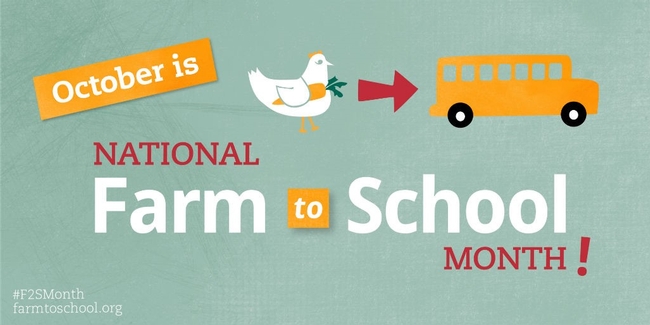
There are plenty of opportunities for teachers and schools to celebrate and get involved in National Farm to School Month with the University of California Division of Agriculture and Natural Resources (UC ANR). Here are a few ideas to get you started.
4-H youth development
Launch a 4-H Club at your school. The 4-H Youth Development Program emphasizes enrichment education through inquiry-based learning. Core content areas include Healthy Living as well as Science, Technology, Engineering and Math (STEM). Clubs have access to a wealth of curricula materials exploring food, agriculture and natural resources. 4-H also offers the Ag in the Classroom school enrichment program.
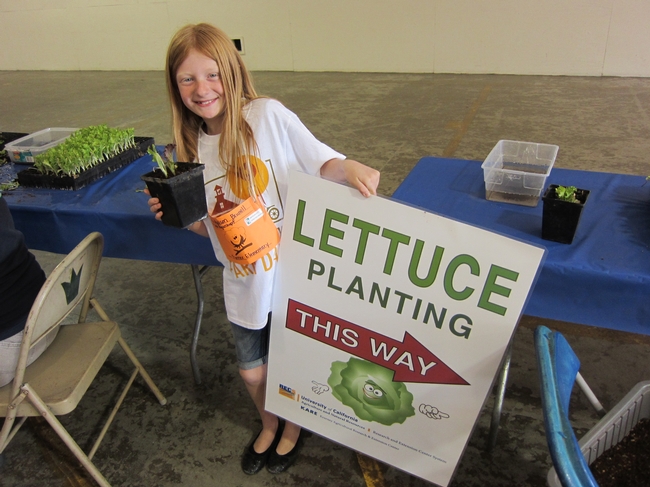
Invite UC ANR academics and program staff to your career day or science fair or to make a classroom presentation. Specialists from Master Gardeners, Nutrition Education, Project Learning Tree, California Naturalist and other UC ANR programs know how to engage and inspire your students.
Some programs, including Project Learning Tree, offer "train the trainer" professional development workshops that equip educators with the skills and knowledge to teach concepts in their own classrooms. Project Learning Tree also provides free activity guides to teachers who attend their workshops. The guides highlight differentiated instruction, reading connections, and assessment strategies and offer ideas to integrate technology into classroom instruction,
Research and Extension Centers
Take your students on a field trip to a UC ANR Research and Extension Center (REC). The nine RECs in California are focal points for community participation and for active involvement in current and relevant regional agricultural and natural resource challenges.
Visiting a REC offers students a unique opportunity to learn about food production through the lens of applied science research in plant pathology, integrated pest management, conservation tillage, water conservation, development of new crop varieties, and much more. Some RECs also host extended education programs such as Sustainable You! Summer Camp and FARM SMART.
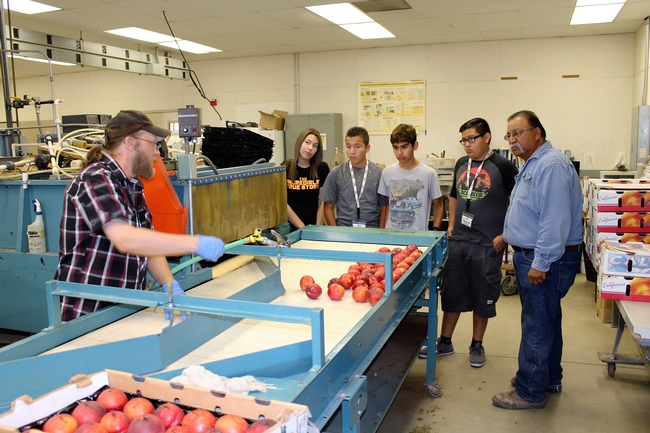
The 2016 National Farm to School Month theme is One Small Step, which highlights the easy ways anyone can get informed, get involved and take action to advance farm to school in their own communities and across the country.
Each week will have a different focus:
- Education (October 3-7)
- Healthy School Meals (October 10-14)
- Farmers & Producers (October 17-21)
- The Next Generation (October 24-28)
Join the celebrations by signing the One Small Step pledge then take your own small step to support healthy kids, thriving farms and vibrant communities this October by partnering with UC ANR.
This story en español.
Inspiring youth leaders to cultivate health
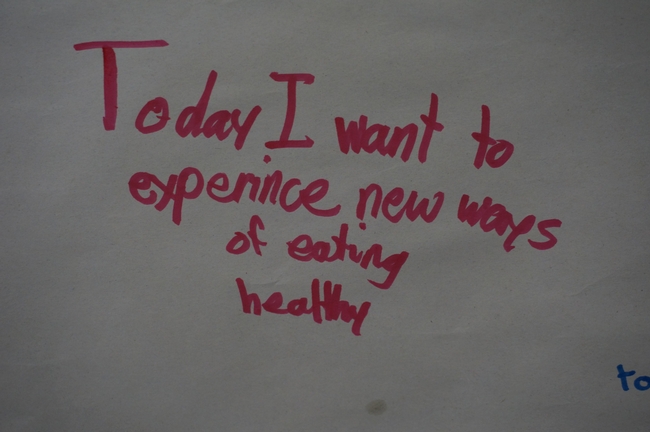
What are sixth-graders interested in these days? “Cooking!” “Growing food!” “Learning how to be healthier.” “Exercising.” “Meeting new friends!” These enthusiastic answers came from sixth-grade student leaders in Santa Maria, Calif., when asked by educators from the UC Cooperative Extension Youth, Families and Communities program in San Luis Obispo and Santa Barbara counties.
Through an integrated youth-focused healthy living project, called Food Smart Families, funded by National 4-H, the UC ANR 4-H Youth Development Program, and the UC CalFresh Nutrition Education program, 32 fourth- through sixth-grade student leaders were brought together from three schools in Santa Maria, Calif., for a full-day educational retreat that focused on engaging youth to explore their healthy lifestyle interests and see themselves as leaders.
Throughout the day, student leaders experienced physical activity games, learned cooking skills, participated in garden-based learning, and developed their presentation skills. They focused on skill development, as well as transference so that the student leaders could take these activities into their own schools to encourage and teach their peers. For example, the fun physical activity breaks that were incorporated throughout the day modeled games where no one is “out” or excluded, while moving enough to get heart rates up.
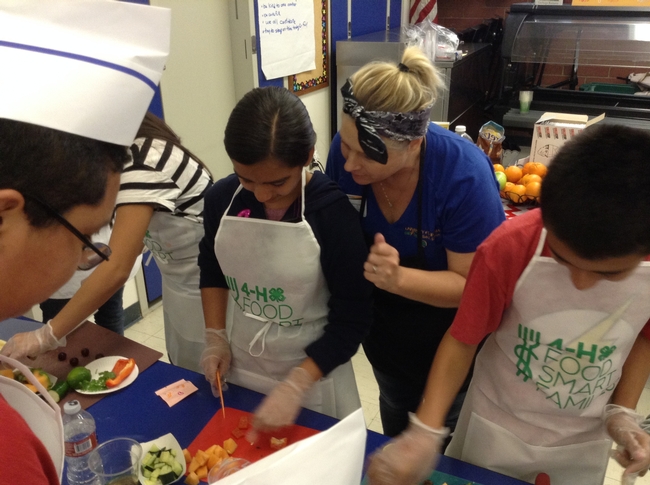
In the garden, student leaders learned the basics of growing food and how to lead a garden lesson. Students discussed garden tools and how to use them safely, then planted their own seeds to take home. The garden session ended with a gleaning of the school citrus orchard where students laughed and enjoyed the fresh air and fresh fruits growing around them. In their own school gardens, the student leaders have offered lessons and tastings to their peers.

By the end of the retreat, the student leaders were excited to take the information and skills back to their schools and start leading. Students shared their plans to help other students be more active during recess, be healthy, and help other kids be healthier too.
“This was the best day I have ever had,” said one of the students.
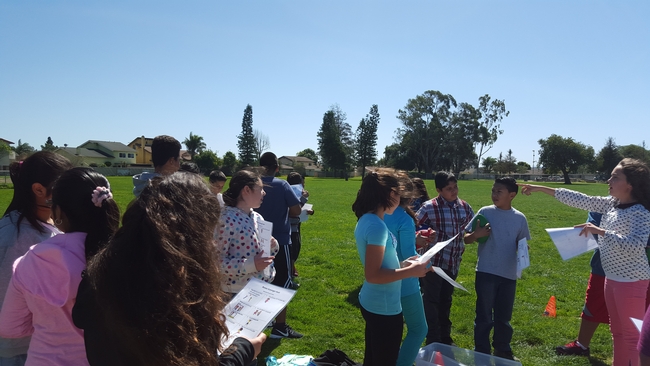
Through the efforts of the Food Smart Families program, the Youth, Families, & Communities program in San Luis Obispo & Santa Barbara counties merged the strengths of the UC CalFresh Nutrition Education program and the UC ANR 4-H Youth Development program to provide new opportunities and experiences for students in this community. With interested and caring adults, these student leaders learned to share their passions for cooking, gardening, and healthy lifestyle with their peers at school and others in their community. The rewards for the school, community and adult allies continue to expand as these inspired student leaders, with strong mentorship and support, take on some of the biggest challenges facing our society and world.

